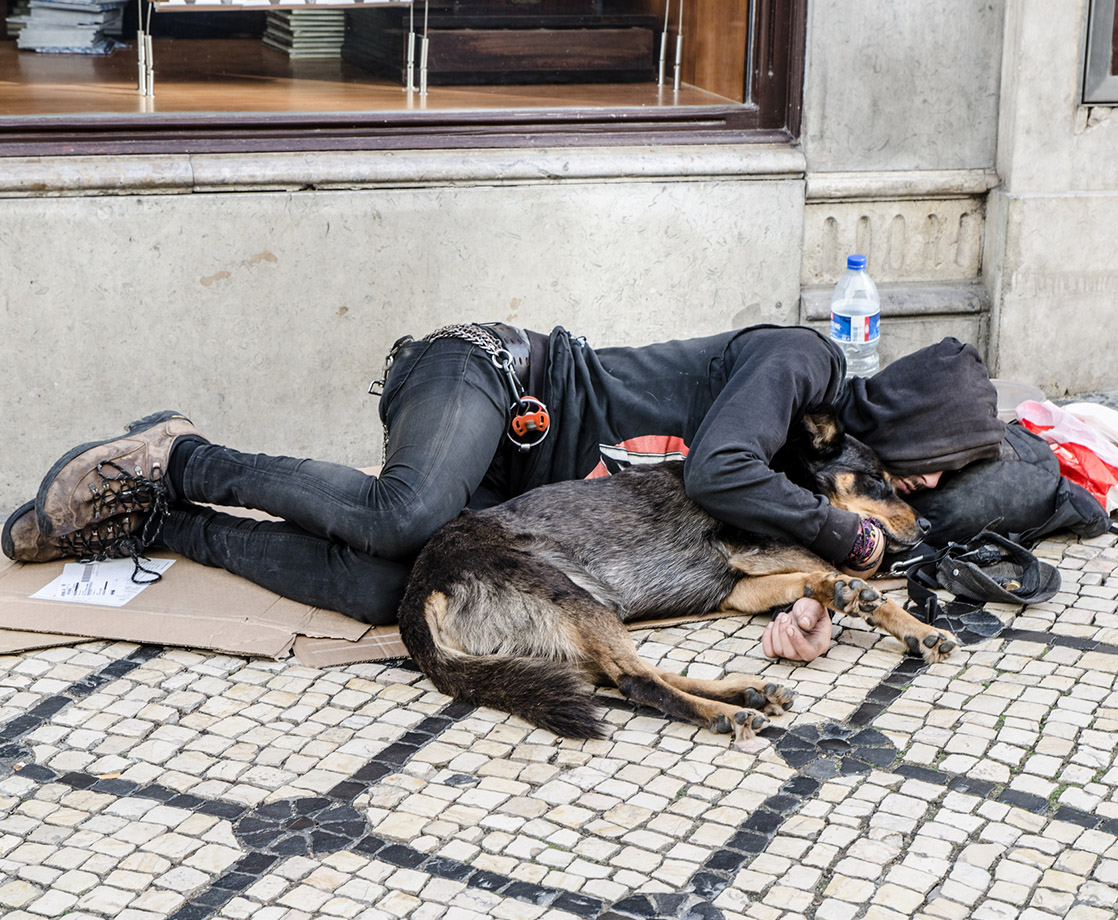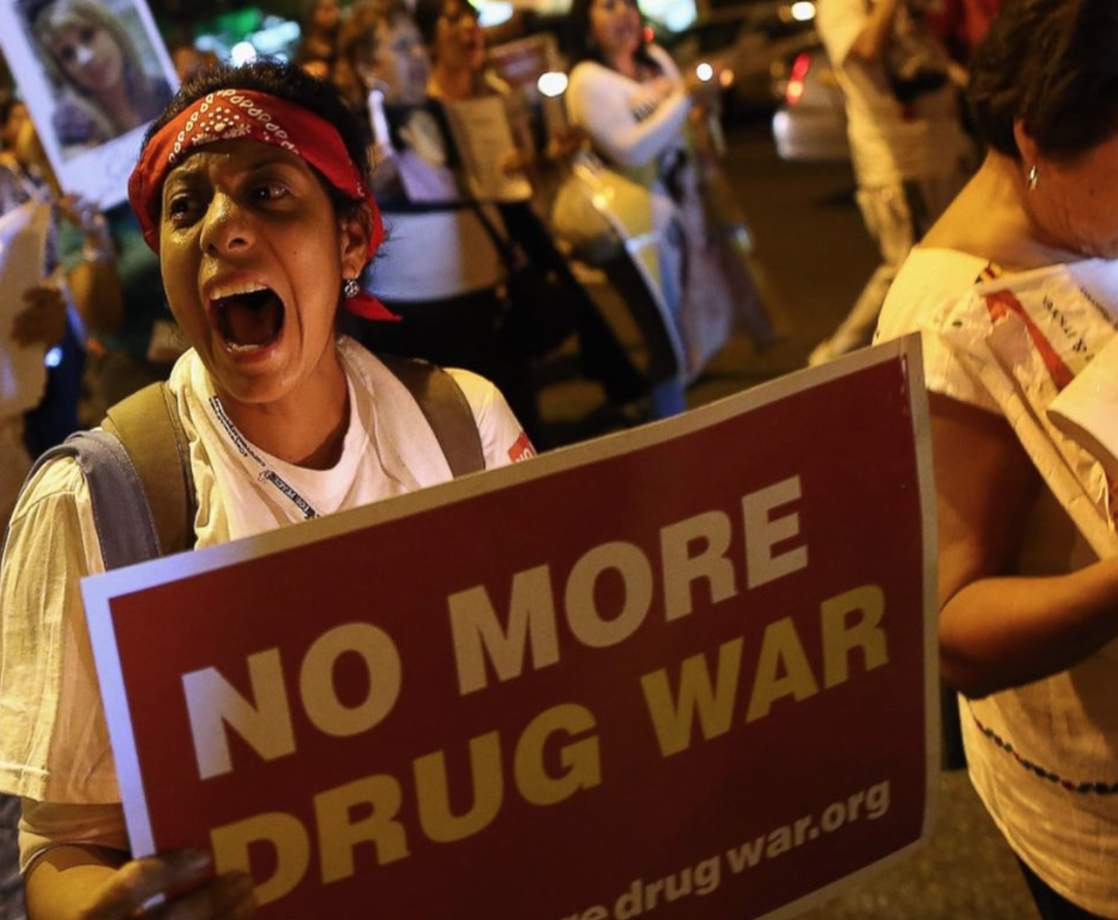Does cannabis legalization lead to increases in homelessness? That's the argument coming from Colorado's law enforcement and homeless shelters, and anti-pot politicians have picked up on it. However, a new study in the Centennial State debunks prohibitionists' latest anti-pot talking point.
The report, titled "A Study of the Local Social and Economic Impacts of Legal Cannabis, Since the Legalization of Recreational Marijuana, on Residents of Pueblo County, Colorado," comes from Colorado State University-Pueblo's Institute of Cannabis Research (ICR), an interdisciplinary program established last year. The primary author, sociology professor and Tim McGettigan, worked closely with 30 other PhDs and Pueblo County officials to compile data on the area's homeless population.
The study's conclusion: "Apart from anecdotal reports, we did not find definitive evidence that links increased homelessness to legal cannabis." Rather, "the major factors leading to homelessness are a lack of affordable housing, inability to find work, and family crises."
Local law enforcement disagreed. Pueblo Police Chief Troy Davenport offered his own anecdote a day after the CSU-Pueblo's findings were delivered to Pueblo's county commissioners. "[The homeless] come to either extensively get jobs in the marijuana field or, as it ends up, most of the time to just get marijuana," he said.
John Suthers, the rabidly anti-marijuana mayor of nearby Colorado Springs, also parroted the homelessness claim. "There's clearly a relationship between homelessness in Colorado and access to marijuana," he told KRDO, "and I think that would account for the fact that Colorado for the most part, and Washington state, have higher-than-average homelessness."
Neither Suthers nor Davenport mentioned Pueblo's opioid epidemic as a cause for homelessness, although it is mentioned in the CSU-Pueblo study. Colorado has one of the highest opioid abuse rates in the country, and Pueblo County has one of the highest rates in the state. In fact, the epidemic has gotten so bad that Pueblo County is considering filing suit against Big Pharma companies Purdue, Johnson & Johnson, and McKesson Corp.
We expect horribly addictive drugs like heroin to put someone out on the streets. But cannabis? How did Gorilla Glue #4 get stuck in this homelessness controversy? Supposedly, after Colorado went legal in 2012, the nation's drifters came to the state en masse to avail themselves of its lax weed laws. The industry's record-breaking revenues, the argument goes, are disproportionately offset by a swelling homeless population overtaxing local shelters.
Posada is a non-profit charity based in Pueblo. The charity provides emergency shelter to families in need, and it helps families transition from homelessness to affordable housing. Anne Stattelman, the executive director at Posada, warned out-of-staters against migrating to Colorado. "Posada has been experiencing unprecedented increases in people in need of services," she blogged late last year. "Many families and individuals are relocating to Pueblo for legal marijuana, benefit acquisition (as Colorado is a Medicaid Expansion State), and the perceived affordability of housing."
CSU-Pueblo's report, however, identified Black Hills Energy, a local power company, as the major culprit behind homelessness in Pueblo. McGettigan wrote that the company's excessively high fees and inhumane shut-off policies (e.g. cutting service during freezing temperatures) were responsible for pushing 7,000 families onto the streets in 2016. Ironically, the report's source for Black Hills' robber-baron practices came from Stattelman, Posada's director.
"When you have a utility kicking thousands of families out of their homes in a community where there are no more than 35,000 family homes… that's 20 percent of the homes with utilities cut off," McGettigan told The Pueblo Chieftain. "And pushing those families out into the streets, you are definitely going to see an increase in homelessness. Blaming it on cannabis is ludicrous."
On Monday, McGettigan invited his critics through email to an open debate at next month's annual ICR conference at CSU-Pueblo. His opposition includes Chief Davenport and the editorial board at The Pueblo Chieftain, which recently described the report's attack on Black Hills Energy as "junk science."
Is Legal Weed or Greed to Blame?
Homelessness was a problem in Colorado long before Amendment 64 was even drafted. In 2012, Denver City Council enacted an "outdoor" or "urban" camping ban that made sleeping downtown a crime. The ban was intended to sweep away Denver's homeless, who became more visible after shelters closed during the economic crash of 2008.
Overall, though, other data sources indicate that Colorado has experienced a decrease in homelessness, not an increase. According to a 2016 report from the U.S. Department of Housing and Urban Development (HUD), Colorado saw a 13 percent increase in homelessness that year, but only after a 29 percent decrease over the past decade.
Whether cannabis caused that jump in homelessness, HUD can't say. In an email to MERRY JANE, HUD's Regional Public Affairs Specialist, Christine Baumann, wrote that no statement could be given about weed causing homelessness "because we do not have any data we can refer to."
"It's not a question that's required for our annual survey," she later said over the phone. "So we don't ask it."
The annual survey Baumann referred to is the Point-in-Time study, which provides HUD with a demographic snapshot of the housing and homelessness situations for a given area.
Donald Burnes, a scholar-in-residence at the University of Denver, runs the Burnes Center on Poverty and Homelessness. A year ago, he made the same conclusion as the CSU-Pueblo study – that cannabis had nothing to do with Colorado's homelessness problem.
"Over the last three to four years, there has not been a major increase in the numbers of people coming in to Colorado who are homeless," Burnes said to MERRY JANE. "The percentage of the total population experiencing homelessness who come from out-of-state has remained very constant — basically 14 to 15 percent."
Burnes drew data from HUD's Point-in-Time survey which, he admits, "is not wonderful. It's fairly sketchy. But the data we do have does not indicate people are crowding into Colorado or becoming homeless" because of cannabis.
In fact, Burnes noted the overwhelming majority of Colorado's homeless population — around 80 percent — are Colorado residents. Most became homeless while living here due to unemployment, medical bills, divorce, or rapidly rising rents (which are not capped by state law).
Besides, he says, the homeless can find cannabis anywhere. Colorado is not unique in that sense. Instead, he credits the state's geography to its popularity among transients and transplants alike.
Burnes recalled a conversation he had with one homeless individual who traveled to Colorado from Arkansas. "I asked him, 'Why did you move to Colorado?' He pointed to the mountains, and he said, 'We don't have this in Arkansas. This is beautiful.'"
"Colorado is a nice place. We have spectacular views," Burnes continued. But he does believe that cannabis has, indirectly, made the state more attractive. "People are coming for jobs. We have one of the lowest unemployment rates in the country. They're not coming specifically for the cannabis, and the people who are experiencing homelessness are not people coming from out-of-state."
Follow Randy Robinson on Twitter











